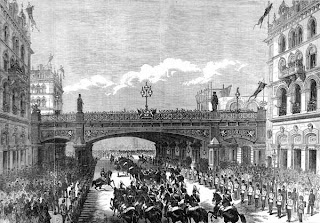 |
| Discarded white goods |
Well over 40
years ago Vance Packard’s book ‘The Wastemakers’ went on the best seller lists
in the US and UK. This was unusual for a book that was about the economics of
industry.
In it he pointed out that any industry that made a product that lasted for ever would soon go out of business. The market would become ‘saturated’ – in other words anyone who had one would not need another one - and there would be no more demand.
So Packard’s notion of “built-in obsolescence” was born.
In it he pointed out that any industry that made a product that lasted for ever would soon go out of business. The market would become ‘saturated’ – in other words anyone who had one would not need another one - and there would be no more demand.
So Packard’s notion of “built-in obsolescence” was born.
It struck a
chord – people had begun to recognise that the products they were buying had shoddiness
built in. Things didn’t last and it was cheaper to buy another one than try to
get it repaired.
In the 21st
Century we have become used to the idea that the economy depends on ‘growth’ –
we have to keep on consuming more and more otherwise the economy dips into
recession. Waste and its removal is now big business.
 |
| Gee whizz growth chart |
But has
shoddiness come from another direction as well as this deliberate sabotage? Is the
design of products just not good enough?
I have recent experience of two products that were ready for our scrapheap well before their allotted time.
The printer
 |
| Standard printer |
The printer
was a good and reasonably efficient printer of documents. The make is well
known and promoted by high street retailers. We liked its reliability and
speed. When the printer ground to a halt after 2 years of heavy use we thought
that was reasonable and we wanted to get an exact replacement. The exact model
was no longer in existence – however an “upgraded” model at a similar price was
available.
Although this
new printer - it was claimed - would do everything and anything all we wanted was for it to
print documents quickly and efficiently.
It soon became clear that the new printer was useless. Its
new system required front loading of paper and after taking the paper through a
Uturn to exit - also at the front – frequently jammed. Why had the back loaded
paper (using gravity) been abandoned? It had seemed to work well.
Was this incompetent design or deliberate obsolescence?
Was this incompetent design or deliberate obsolescence?
The washing machine
The washing
machine washed clothes – no surprises there – but a few months after the
initial one year warranty the paddles attached to the drum fell off one by one.
The plastic paddles had been attached to metal teeth inside the drum and rendered
the machine useless. The paddles were intended to ensure that the clothes
circulated within the drum. These three Toblerone shaped pieces of plastic with
fragile tabs were vital for the machine’s function.
I called the manufacturer to find to my amazement that another set
of paddles would cost £50 plus postage and packing. When I questioned the cost
I was told this was the way it is. If I wanted the machine to function I needed
to have them. They were duly despatched and the expensive package arrived – I could
wash clothes again.
Eighteen months and three sets of paddles later I ask
myself the same question.
Is this a design malfunction or a cynical attempt to extract money from me a captive consumer?
Planned obsolescence or simply poor design?
Is this a design malfunction or a cynical attempt to extract money from me a captive consumer?
Planned obsolescence or simply poor design?












